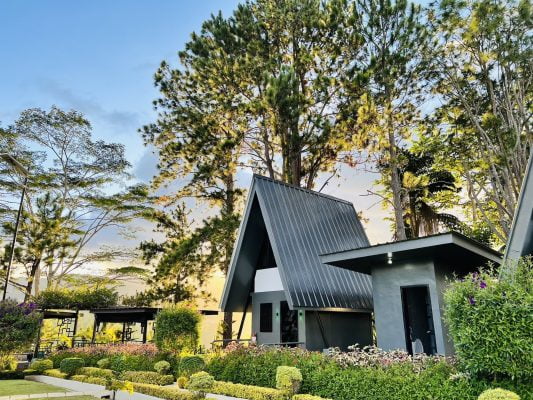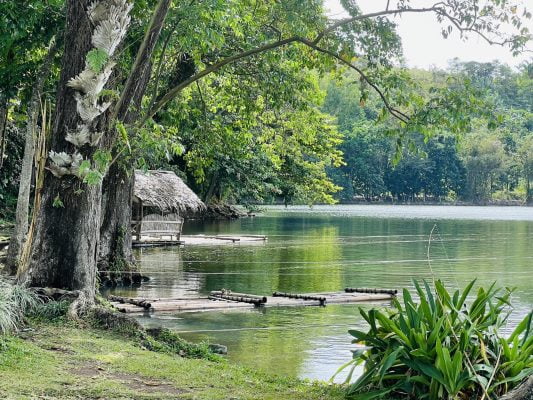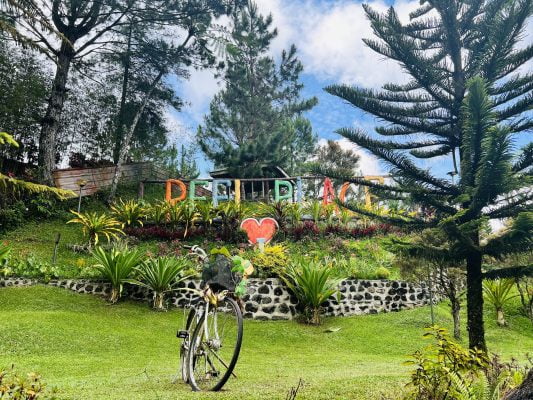Agusan de Sur is a prospering province locked in the midst of vast marshlands, thick verdant forests and thousands of hectares of arable lands dedicated to rice, corn and cassava. The wide marshland is home to a diverse ecological resources and a major source of water in the province. The recent capture of the 21-foot giant crocodile in one of its municipalities gave the province a boost in terms of eco-tourism.
History
Archeological finds unearthed in the plains of Agusan del Sur have established the trading connection between the province and its Southeast Asian neighbors. The artifacts found were unmistakably from the Majapahit Empire, a pre-Spanish cultural influence.
Agusan is believed to have gotten its name from the word “agasan” which means “where the water flows”. The Spanish conquistadores who have set foot in the plains of Agusan have misheard the local dialect and thus, the etymology of the name.
Geography
The 896,550 hectares of land cradling the province is a mixture of marshlands and dense forest cover that provides a fertile agro-industrial reservoir. Some 76% of the total land area is forestland which is slowly being converted into commercial use to accommodate the increasing population. The huge 320-kilometer Agusan River traversing the valleys of the province provided the means of transit of goods from the inner slopes to the coast and vice versa.
The province of Agusan del Sur is composed of 13 municipalities and the City of Bayugan. Seven of these municipalities are located along the big river and the rest are in the plains.
Climate
The province has a Type II climate which means no distinct dry season. Rain is abundant all throughout the year with maximum rainfall during the months of December to January. Agusan del Sur is situated below the typhoon belt but the northeast monsoon often brings heavy rainfall and gusty winds.
Language and Culture
Due to the influences of the settlers from the Visayas region, Visayan or Cebuano is spoken extensively in most town centers. Ethnic tribes of Aeta, Mamanwa, Bagobo, Higaonon, and Manobo are said to be the original inhabitants of the province but were eventually driven into the hinterlands by the attacks of seafaring “Moros”.
The provincial government has revived the cultural legacy of the Indigenous Peoples through the festivals and eco-tourism promotions. One of the most popular attractions is the Naliyagan Festival, a showcase of cultural dances and songs of the tribal minorities happening every 12th of June and culminates on the 17th which is the Foundation Day of the province.
The Agusanons are a very friendly and accommodating people, always eager to offer their hospitality to the weary traveller or the curious tourist.
Getting Around
Getting to the province of Agusan del Sur is not a complicated trip. One of the easiest ways is flying to Butuan City where the Bancasi Airport is or from Davao City. From there, provincial buses plying to its regional capital, Prosperidad are available 24 hours. Cebu Pacific and Philippine Airlines fly regularly to the province. Long distance jeepneys take the National Highway while the “motorela” can take you around the town centers. Motorcycles or “habal-habal” can take you almost anywhere using the back roads.
Where to Stay
If you plan to stay a few days in the province, better stay in Prosperidad, the capital town of Agusan del Sur. You cannot miss the Nerian’s Leisure Park along the Maharlika Highway. Several small lodging inns dotting the municipal centers cater to even the most meticulous guest.
Villa Teresita Resort at Lapag, Karaos and Diwata Training Center at San Isidro, San Francisco are both low-budget accommodations with fine hotel amenities.
You may prefer to stay in Butuan in neighboring Agusan del Norte. The city of more than 300,000 has more options for accommodations and provides easy access to Agusan del Sur.
A useful site for finding hotels and other accommodations in the area is HotelsCombined.com. Hotels Combined makes it easy to search over 30 of the world’s leading hotel reservation sites at the same time.
Dining
Experience the delectable “Sinugbang Tilapia” or “Sinutil”, a fresh-water fish roasted to perfection at Nerian’s Leisure Park. Another favorite food on the road is the “Tinolang Panga”, fish jaw in clear soup with green leafy vegetables that you can find in small diners along the highway.
What to Do
There is no shortage of things to do in the Province of Agusan del Sur. You can visit the province any time of the year and be entertained without rushing to catch a schedule. A visit to see the world’s biggest crocodile ensnared by the folks of Bayugan, is a jaw-dropping experience. Named “Lolong” by the people, this 21-foot, 2,370 pounds saltwater croc is the main attraction in the eco-park specifically built for the giant reptile. UPDATE: Lolong the giant crocodile died on February 2013, barely two years after he was caught and held in captivity. Efforts are being made to preserve the body for public appreciation.
Another thing to experience is a cruise along the vast Agusan Marsh, a 49,686 hectare wetland that is home to an extensive collection of rare and endangered species of flora and fauna. A low boat will take you around the swamp for a trip akin to the National Geographic’s venture into the wild.
If you get enough of the swamp, you can go nature trekking up to the 633 meters high Mount Magdiwata in San Fransisco and take a dip at its hot and cold spring after that invigorating climb. The waterfalls and caves scattered all over the province provide a spell-binding adventure.
Indeed, a trip to Agusan del Sur is a journey of the soul, where travelers are rejuvenated by the beauty of the virtually untouched greenery and exotic vistas; you can never get enough of it.






